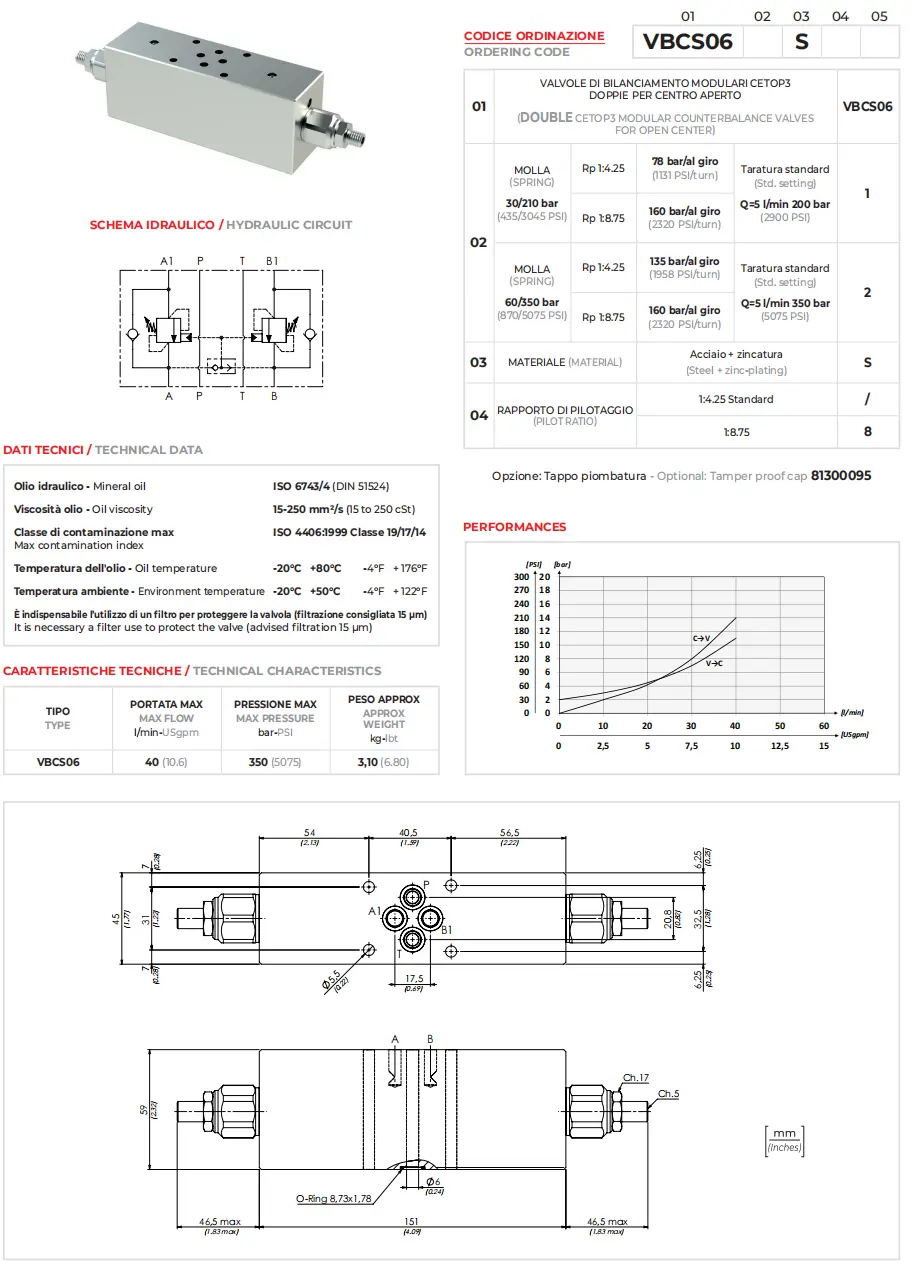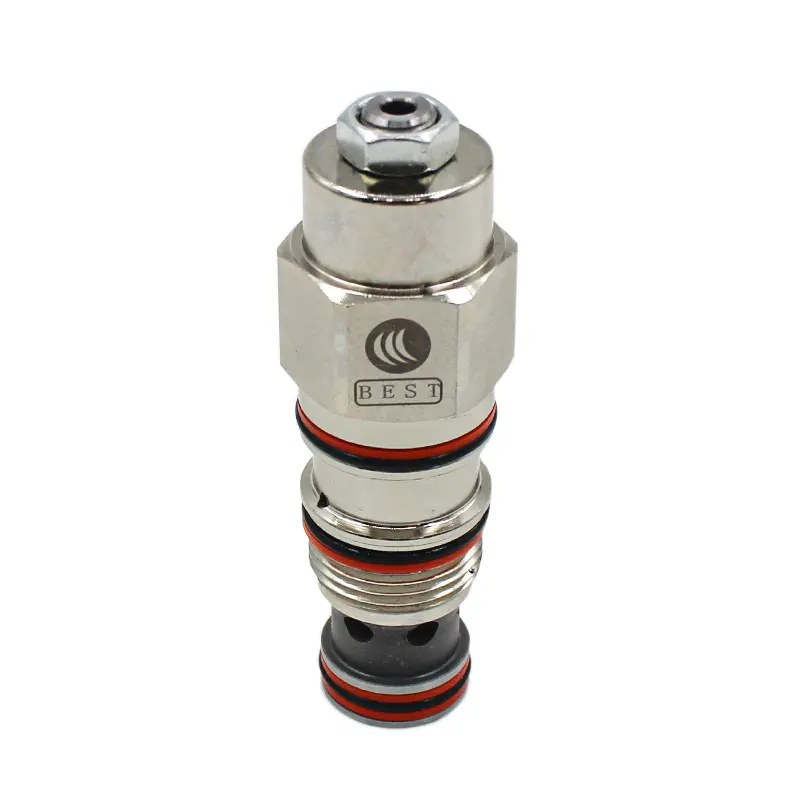
The Critical Role of Hydraulic Control Valves in Your Excavator’s Hydraulic System
2025-10-22As a factory owner who has been producing hydraulic valves for over a decade, I've spoken with countless procurement managers and engineers from all over the world. One thing I've learned is that while everyone understands the importance of a good hydraulic system, the finer details of its most critical components—the valves—can sometimes be a gray area. This article is for you, the person who needs to source reliable parts for heavy machinery like an excavator or crane. We'll break down exactly what hydraulic control valves do, explore the different types of valves, and explain why choosing the right valve is not just a technical decision, but a crucial business decision that impacts safety, efficiency, and your bottom line. Let's make sure you have the knowledge to select the perfect valve every time.
What is a Hydraulic Valve and Why is it the Heart of Your Machinery?
At its core, a hydraulic system uses pressurized fluid to generate immense power. Think of the arm of an excavator digging into hard earth or a crane lifting tons of steel. That force doesn't happen by magic; it's the result of carefully managed hydraulic fluid. And what manages that fluid? The hydraulic valve. In simple terms, a valve is a device that directs, regulates, or controls the flow of that fluid. It acts as the brain and nervous system for the machine's muscle, telling the hydraulic fluid where to go, when to go, and with how much pressure. Without a reliable valve, the entire hydraulic system would be uncontrollable, inefficient, or downright dangerous.
The critical role of each valve cannot be overstated. These components are responsible for starting, stopping, and changing the direction of the fluid flow. They also regulate the pressure within the hydraulic system to ensure it operates within safe limits. Every single movement of a hydraulic actuator, such as a cylinder extending or a motor turning, is governed by a valve. This is why we often refer to them as control valve units. A high-quality control valve ensures smooth, responsive, and precise movements, which are essential for tasks requiring accuracy. A poorly made valve, on the other hand, can lead to jerky operations, system failures, and costly downtime.
In my experience, clients like Mark Thompson from the USA, who source parts for machinery manufacturers, understand that the performance of the final product hinges on the quality of its individual components. A single faulty valve can compromise a multi-million dollar piece of equipment. That’s why our factory focuses so heavily on precision engineering. The internal parts of a valve, like the spool or poppet, must be machined to incredibly tight tolerances to prevent leaks and ensure consistent performance. The materials used in the valve body must be robust enough to withstand high pressure and temperature fluctuations for years. This attention to detail is what makes a great valve.
How Do Different Types of Pressure Control Valves Work?
Pressure is the lifeblood of a hydraulic system, but uncontrolled pressure is its greatest threat. That's where pressure control valve components come in. Their primary job is to manage the pressure in the system. There are several types of pressure regulating valves, but they all share the goal of keeping the system safe and efficient. The most common pressure control valve types you'll encounter are relief valves, sequence valves, and pressure reducing valves. Each valve serves a unique purpose in maintaining the delicate balance of force within the machinery.
A pressure relief valve is arguably the most important safety device in any hydraulic system. Its job is to set a maximum pressure limit. Imagine a safety valve on a pressure cooker; when the pressure inside gets too high, the valve opens slightly to let off steam. A pressure relief valve does the same for hydraulic fluid. It's a normally closed valve that stays shut during normal operation. However, when the system pressure exceeds a preset level, the valve opens and diverts some of the hydraulic fluid back to the tank. This prevents excessive pressure from damaging pumps, hoses, and other hydraulic components. We produce a range of Direct Acting Relief Valves specifically for this purpose, as they offer quick response times to pressure spikes.
On the other hand, a pressure reducing valve is used when a specific part of a circuit needs to operate at a lower pressure than the main hydraulic system. This type of hydraulic valve is normally open and works by partially closing to restrict flow when the downstream (outlet) pressure reaches a certain level. This ensures that a specific actuator receives a constant pressure, regardless of pressure fluctuations in the main system. This precise pressure control is vital for applications where a delicate touch is needed. The proper valve ensures that each part of the machinery gets exactly the pressure it needs to function correctly. Every valve we manufacture is tested to guarantee it can maintain a constant pressure as specified.

What is the Critical Role of a Relief Valve in an Excavator?
An excavator is a perfect example of a machine operating under extreme and constantly changing loads. When the bucket hits a large rock or dense soil, the pressure in the hydraulic system can spike in an instant. Without a relief valve, this sudden spike could rupture hydraulic lines or damage the hydraulic pump—a catastrophic failure in the field. This is where the pressure relief valve plays its pivotal role. It acts as a guardian for the entire hydraulic system, instantly opening to bleed off the excess pressure and protect the machinery.
The operation is simple but brilliant. The valve contains a spring that holds a poppet or ball in place, blocking the flow path. The force of this spring is what determines the pressure setting. When the pressure of hydraulic fluid pushing against the poppet becomes greater than the spring force, the valve opens. The higher the pressure exceeds the set limit, the more the valve opens, allowing more fluid flow back to the reservoir. This dynamic pressure adjustment ensures the system from excessive pressure is always protected, allowing the operator to work confidently and aggressively without fear of damaging the equipment.
For a machine like an excavator, this isn't just about preventing damage; it's about performance and longevity. A well-calibrated relief valve allows the hydraulic system to work at its maximum potential power without crossing the line into a danger zone. This is why quality is non-negotiable for this type of valve. The valves are designed to react in milliseconds to changes in pressure, and this reliability comes from high-quality materials and precision manufacturing. Every valve must be consistent, ensuring every piece of machinery is equally protected. This is a core principle in our production lines.
How Does Flow Control Impact the Precision of a Crane?
While pressure control is about force, flow control is all about speed. The speed at which a hydraulic cylinder extends or a motor turns is directly proportional to the flow rate of the hydraulic fluid entering it. In a machine that requires precise control, like a crane lifting a delicate and heavy load, managing this speed is absolutely critical. This is the job of flow control valves. These valves regulate the flow rate to an actuator, allowing the operator to perform smooth, controlled, and safe movements.
Imagine a crane operator trying to place a steel beam onto a skyscraper. If the movement is jerky or too fast, the load could swing dangerously, endangering workers and property. A flow control valve allows the operator to raise, lower, and extend the boom with surgical precision. It does this by creating a restriction, or orifice, in the fluid path. The size of this restriction can often be adjusted, allowing for variable speed control. Some control valve designs even compensate for changes in pressure to maintain a constant flow rate, ensuring the speed remains steady even if the load changes. This is where our expertise in creating valves like the Modular One Way Flow Control Valve becomes vital for our customers.
The effectiveness of these valves is essential for both safety and efficiency. Flow control valves ensure that the machinery operates predictably. This predictability allows operators to develop a feel for the machine, leading to faster and safer work cycles. The valves also prevent a phenomenon called "cavitation," where a sudden drop in pressure can create vapor bubbles in the hydraulic fluid, which can cause damage when they collapse. By ensuring a smooth and controlled flow of hydraulic fluid, these valves contribute significantly to the overall health and longevity of hydraulic systems.

Can You Explain Directional Control Valves in Simple Terms?
If pressure control valves manage the "how much" and flow control valves manage the "how fast," then directional control valves manage the "where." Their job is to direct the hydraulic fluid to the correct actuator at the right time to make the machine perform a task. Think of them as the traffic cops of the hydraulic system. A typical directional control valve can start, stop, and change the direction of hydraulic fluid flow, which in turn controls the movement of a hydraulic cylinder or motor.
The most common design is the spool valve. Inside the valve body, there is a precisely machined "spool" that can slide back and forth. This spool has lands (the wider parts) and grooves. As the spool moves, it opens and closes different pathways, connecting the pump's flow to one side of an actuator while opening the other side back to the tank. For example, to extend a cylinder, the valve directs fluid to its base end. To retract it, the spool shifts, and the valve sends fluid to the rod end instead. This simple mechanism is the basis for most hydraulic movements.
These valves are often described by the number of "ports" (connections) and "positions" the spool can take. For example, a "4-way, 3-position" valve is very common. It has four ports (pump, tank, and two work ports for the actuator) and three positions (extend, retract, and a neutral center position). The way these valves are used in complex circuits allows for intricate sequences of operations, all controlled by the simple movement of a valve spool. Check valves, which only allow fluid to flow in one direction, are a very simple but essential type of directional valve. More complex systems use Double Pilot Operated Check Valves to lock cylinders in place securely.
How Do You Choose the Right Hydraulic Valve for Your Application?
Selecting the right valve for your application is a critical task that directly impacts performance, safety, and cost. As a procurement officer, you don't need to be a hydraulic engineer, but understanding a few key parameters will help you have a more productive conversation with suppliers and make a better decision. The process of choosing the right hydraulic control valve involves matching the valve's specifications to the system's requirements.
First, you need to consider the maximum flow rate and pressure the valve will handle. A valve that is too small for the flow rate of hydraulic fluid will create a significant pressure drop, wasting energy and generating heat. A valve with a pressure rating lower than the system's maximum pressure is a major safety hazard. Secondly, consider the function. Do you need to control pressure, flow, or direction? Is simple on/off control sufficient, or is proportional pressure control required for variable output? The complexity of the valve should match the complexity of the task.
Here is a simplified table to guide your initial thinking when sourcing a valve:
| Valve Type | Primary Function | Key Question to Ask |
|---|---|---|
| Pressure Relief Valve | System Safety | What is the maximum operating pressure of the system? |
| Pressure Reducing Valve | Component Control | Does a specific circuit need a lower pressure than the main system? |
| Flow Control Valve | Speed Control | How critical is precise speed control for the machine's operation? |
| Directional Control Valve | Movement Control | What movements does the actuator need to perform (e.g., extend/retract)? |
| Check Valve | Prevent Backflow | Is it important to hold a load or prevent reverse flow? |
Finally, consider the operating environment. Will the valve be exposed to extreme temperatures, corrosive materials, or high vibration? This will influence the required materials for the valve body and seals. Communicating these requirements clearly to your supplier is key. At my factory, we often work with clients to customize a valve to ensure the performance of the valve is perfectly suited to their specific machinery.

Why are Quality Certifications for a Hydraulic Valve So Important?
In the global marketplace, trust is everything. For a buyer like Mark in the USA sourcing from a factory in China, how can you be sure you're getting a quality product? This is where internationally recognized certifications like ISO 9001 come in. These aren't just pieces of paper; they are proof that a manufacturer has a robust quality management system in place. They show a commitment to consistency, continuous improvement, and customer satisfaction. A certified supplier is less likely to engage in certificate fraud, a major pain point for many buyers.
An ISO 9001 certification, for example, means that every step of our process—from sourcing raw materials to the final testing of every single valve—is documented and follows a strict set of procedures. This ensures traceability. If a problem ever arises with a valve, we can trace it back to its exact production batch, identify the root cause, and prevent it from happening again. This systematic approach to quality is what separates reliable suppliers from the rest. It provides peace of mind that the valve you're installing in your machinery has been made to a consistently high standard.
Beyond general quality management, specific industry standards for hydraulic components are also crucial. These standards dictate testing procedures, material specifications, and performance criteria for each type of hydraulic valve. When we say our valves are compliant with international safety and quality standards, it means they have been rigorously tested to meet or exceed those benchmarks. This ensures that the valve will perform as expected under the specified operating conditions. For anyone sourcing components, asking for and verifying these certifications is a non-negotiable step in due diligence. It’s your best defense against poor quality and unreliable partners.
What Makes a Cartridge-Type Relief Valve a Versatile Choice?
As hydraulic systems have become more compact and complex, the demand for space-saving and versatile components has grown. This is where the cartridge valve shines. Unlike traditional monolithic valves that have all their internal parts in one solid block, a cartridge valve is a compact insert that fits into a cavity machined into a manifold block. This design offers several significant advantages, making it a popular choice in modern machinery.
First, versatility. A single manifold block can be designed to accept many different types of cartridge valves—pressure control, flow control, directional control, you name it. This allows engineers to create highly integrated and customized hydraulic circuits in a very small space. If a valve needs to be replaced, you simply unscrew the old cartridge and screw in a new one. This drastically reduces maintenance time and complexity compared to removing a large, heavy valve with multiple hydraulic lines attached. Our Relief Valve-Cartridge Type is a prime example of this efficient and modern approach to valve design.
Second, performance and reliability. Because the flow paths are machined directly into the manifold, there are fewer potential leak points from external hoses and fittings. The shorter, smoother flow paths can also reduce pressure drop and improve the overall efficiency of the hydraulic system. The compact design of the cartridge valve itself often allows for faster response times, which is particularly important for a pressure relief valve that needs to react instantly to pressure peaks. This combination of flexibility, ease of maintenance, and high performance makes the cartridge valve a cornerstone of modern hydraulic design.
How Does a Quality Valve Affect the Longevity of Your Hydraulic System?
The longevity of hydraulic systems is a major concern for any equipment owner. A hydraulic system is a significant investment, and maximizing its operational life is key to profitability. The quality of the hydraulic valve you choose plays a massive role in this. A high-quality valve is an investment in durability. It’s built from superior materials that resist wear and tear from the constant movement of internal parts and the high-pressure flow of hydraulic fluid. Better seals prevent leaks, which not only saves fluid but also prevents contaminants from entering the hydraulic system and damaging other components.
A well-designed control valve also contributes to system health by operating more efficiently. For instance, a valve with smooth internal passages and minimal leakage results in less energy being wasted as heat. Excessive heat is a major enemy of hydraulic systems; it degrades the hydraulic fluid, hardens seals, and can cause thermal expansion in metal parts, leading to premature failure. By maintaining optimal pressure and flow with minimal energy loss, a good valve helps the entire system run cooler and last longer. The valves provide the kind of stable operation that extends the life of pumps, motors, and cylinders.
Furthermore, a reliable valve provides consistent and predictable protection. Take a pressure relief valve, for example. A low-quality valve might have its pressure setting drift over time due to a weak spring or wear on the seat. This could lead to the valve opening too late, failing to protect the system from a pressure spike, or opening too early, reducing the system's performance. The longevity of the entire hydraulic system depends on this valve doing its job correctly, every single time, for years on end. Investing in a quality valve is investing in the long-term health of your machinery.
What Are Common Problems a High-Quality Valve Can Prevent?
Many of the common issues that plague hydraulic systems can be traced back to a faulty or low-quality valve. One of the most frequent problems is internal or external leakage. A high-quality valve is machined to tighter tolerances and uses superior sealing materials, drastically reducing the chances of leaks that can drain power, create safety hazards, and contaminate the environment. The valves protect not just the machine, but also its surroundings.
Another common issue is "stiction," where a valve spool sticks and fails to move smoothly. This results in jerky and unpredictable operation of the actuator, which is unacceptable in applications requiring precise pressure control. This problem is often caused by poor surface finishing on the internal components of the valve or contaminants in the hydraulic fluid. A well-made valve has finely polished internal surfaces and is designed to be more tolerant of minor contamination, ensuring smooth and reliable shifting. The valves regulate motion smoothly, which is a hallmark of quality.
Finally, a quality valve prevents performance degradation over time. Valves are crucial for maintaining the efficiency of the operation of hydraulic systems. In a low-cost valve, internal wear can quickly lead to increased internal leakage, meaning more of the pump's flow is wasted instead of being used to do work. This reduces the machine's speed and power, forcing the system to work harder and consume more energy. A durable valve, made from hardened steel and designed to minimize wear, will maintain its performance specifications for much longer. These valves maintain system integrity. The valves are critical components, and choosing a quality valve from the start is the best way to prevent a host of future headaches. Every valve we ship is a testament to this philosophy.
Key Takeaways
As we've explored, the humble valve is the unsung hero of any powerful hydraulic machine. Choosing the right one is essential for the performance, safety, and longevity of your equipment. Here are the most important things to remember:
- Valves are the Brains: A hydraulic valve is not just a gatekeeper for fluid; it's a sophisticated control valve that directs the power of the entire hydraulic system.
- Three Core Functions: The vast majority of valves available can be categorized by their primary function: managing pressure (pressure control valve), speed (flow control valve), or direction (directional control valves).
- Safety First: The pressure relief valve is the most critical safety component in a hydraulic system, protecting it from dangerous pressure spikes. Never compromise on its quality.
- Quality is an Investment: A well-made valve prevents leaks, reduces heat, ensures smooth operation, and extends the life of your entire machine. It's an upfront investment that pays dividends in reduced downtime and maintenance costs.
- Certifications Matter: Look for suppliers with certifications like ISO 9001. It’s your best assurance of consistent quality, reliability, and a trustworthy partnership.
- Know Your Needs: Understanding basic parameters like maximum pressure, flow rate, and required function will empower you to select the perfect valve for your application.




